The History Book Club discussion

This topic is about
Enemies
AMERICAN DEMOCRACY - GOVERNMENT
>
ENEMIES: A HISTORY OF THE FBI - GLOSSARY ~ (SPOILER THREAD)
 Griffin Bell:
Griffin Bell:
Griffin Boyette Bell was born in Americus, Georgia, in 1918, and graduated cum laude from Mercer University Law School in 1948. He practiced law in both Savannah and Rome, Georgia, before moving to Atlanta.
Bell was a partner in the Atlanta law firm King & Spalding from 1953 to 1961 and was then appointed by President John F. Kennedy to the U.S. Court of Appeals for the Fifth Circuit in 1961, serving until 1976, where he ruled moderately on a number of school desegregation cases.
Bell served as attorney general under President Carter from 1977 to 1979. He did not seek the position but served as a favor to Carter, a close friend. After his term in the cabinet, Bell served on the secretary of state's advisory committee on South Africa (1985-1987).
In 1989, he became vice chairman of President George H.W. Bush's Commission on Federal Ethics Law Reform; he was also counsel to President Bush during the Iran-Contra investigation. Bell also continued practicing law in Atlanta with King & Spalding.
(Source: http://millercenter.org/president/car...)
More:
http://www.justice.gov/ag/aghistpage....
http://en.wikipedia.org/wiki/Griffin_...
http://www.georgiaencyclopedia.org/ng...
 James Earl Carter:
James Earl Carter: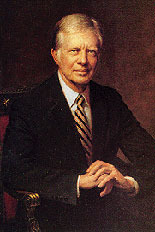
is an American politician who served as the 39th President of the United States (1977–1981) and was the recipient of the 2002 Nobel Peace Prize, the only U.S. President to have received the Prize after leaving office. Before he became President, Carter served as a U.S. Naval officer, was a peanut farmer, served two terms as a Georgia State Senator and one as Governor of Georgia (1971–1975)
(Source: http://en.wikipedia.org/wiki/Jimmy_Ca...)
More:
http://millercenter.org/president/carter
http://www.whitehouse.gov/about/presi...
http://www.georgiaencyclopedia.org/ng...
http://www.submarinehistory.com/Presi...
http://www.jimmycarterlibrary.org/
 William H. Webster:
William H. Webster:
William H. Webster was born on March 6, 1924 in St. Louis, Missouri and received his early education in Webster Groves near St. Louis. He was awarded a Bachelor of Arts degree from Amherst College in Amherst, Massachusetts in 1947, where, in 1975, he received an Honorary Doctor of Laws degree. Judge Webster received his Juris Doctor degree from Washington University Law School, St. Louis, Missouri, in 1949. He served as a lieutenant in the United States Navy in World War II and again in the Korean War.
Judge Webster was a practicing attorney with a St. Louis law firm from 1949 to 1959, and he served as United States Attorney for the Eastern District of Missouri from 1960 to 1961. He returned to private practice in 1961. From 1964 to 1969, he was a member of the Missouri Board of Law Examiners.
In 1970, Judge Webster was appointed a Judge of the United States District Court for the Eastern District of Missouri and, in 1973, was elevated to the United States Court of Appeals for the Eighth Circuit. He resigned on February 23, 1978, to become Director of the Federal Bureau of Investigation.
During his service on the bench, Judge Webster was Chairman of the Judiciary Conference Advisory Committee on the Criminal Rules and was a member of the Ad Hoc Committee on Habeas Corpus and the Committee of Court Administration.
Judge Webster was a member of the American Bar Association; the Council of the American Law Institute; the Order of the Coif; the Missouri Bar Integrated; and the Metropolitan St. Louis Bar Association. He also served as Chairman of the Corporation, Banking and Business Law Section of the American Bar Association; and is a fellow of the American Bar Foundation.
He has received many honors from various schools, including: Washington University Alumni Citation for contributions to the field of law; the Distinguished Alumnus Award from Washington University Law School in 1977; the William Greenleaf Elliot Award from Washington University, May 1981; the Fordham Law School Louis Stein Award, October 1982; the 1986 Thomas Jefferson Award in Law from the University of Virginia; and, honorary degrees from DePauw University; William Woods College; Drury College; Washington University; Columbia College; University of Dayton School of Law; University of Notre Dame; Centre College; Dickinson School of Law; University of Miami; DePaul University; The American University; and, the John Jay College of Criminal Justice.
He is also a member of the Board of Trustees of Washington University, the University of Colorado Law School Board of Visitors, and the National Advisory Board of the American University.
Judge Webster has received other honors and awards, including: Man of the Year, 1980, by the St. Louis Globe-Democrat; the Riot Relief Fund Award in New York City; the August 1983, International Platform Association Theodore Roosevelt Award for excellence in public service; the Jefferson Award for the Greatest Public Service by an Elected or Appointed Official, June 1984; the Freedoms Foundation National Service Medal in Valley Forge, Pennsylvania, May 1985; the First Annual Patrick V. Murphy Award from the Police Foundation, Washington, D.C., for distinguished service in law enforcement; and Father of the Year for Public Service in May 1986, by the National Father’s Day Committee,
Judge Webster was elected to active membership in the National Academy of Public Administration in October 1981 and, in May 1985, became president of the Institute of Judicial Administration.
(Source: http://www.fbi.gov/about-us/history/d...)
More:
http://en.wikipedia.org/wiki/William_...
 Robert Hanssen:
Robert Hanssen: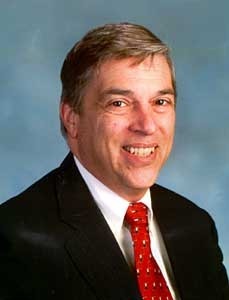
is a former American Federal Bureau of Investigation (FBI) agent who spied for Soviet and Russian intelligence services against the United States for 22 years from 1979 to 2001.
More:
http://en.wikipedia.org/wiki/Robert_H...
http://www.spymuseum.com/pages/agent-...
http://www.usatoday.com/news/washingt...
http://www.cbsnews.com/stories/2003/0...
http://www.fbi.gov/about-us/history/f...

 David A. Vise
David A. Vise
 Ed Meese:
Ed Meese:
Edwin Meese was born on December 2, 1931. He graduated from Yale University in 1953 and then obtained a law degree from the University of California at Berkeley. Meese then worked as deputy district attorney of Alameda County, California.
When Ronald Reagan was governor of California, Meese was his legal affairs secretary (1967-1968) as well as his executive assistant and chief of staff (1969-1974). He returned to private life thereafter, working as vice president for administration of Rohr Industries (1975-1976) and then as a law professor at the University of San Diego, where he held the position of director of the Center for Criminal Justice and Policy and Management (1977-1981).
During the 1980 presidential campaign, Meese was chief of staff for the Republican ticket of Ronald Reagan and George Bush; following the election, he ran the White House transition team.
During the Reagan administration, Meese served as counselor for political affairs from 1981 to 1985 and as attorney general from February 1985 to August 1988.
(Source: http://millercenter.org/president/rea...)
More:
http://en.wikipedia.org/wiki/Edwin_Meese
http://www.heritage.org/about/staff/m...
http://www.justice.gov/ag/aghistpage....
 Murder of Four Church Women in El Salvador:
Murder of Four Church Women in El Salvador:On the afternoon of December 2, 1980, Kazel and Jean Donovan, a layperson who worked with her in La Libertad, picked up two Maryknoll missionary sisters, Teresa Alexander and Madeline Dorsey, from the airport after the pair arrived from attending a Maryknoll conference in Managua, Nicaragua. They were under surveillance by a National Guardsman of El Salvador at the time, who phoned his commander for orders.
Acting on orders from their commander, five National Guard members changed into plainclothes and continued to stake out the airport. Donovan and Kazel returned to pick up another pair of Maryknoll sisters, Maura Clarke and Ita Ford, who were returning from the same conference on a flight not due until 7:00 pm.[2]
The five members of the National Guard, out of uniform, stopped the vehicle they were driving after they left the airport in San Salvador. Kazel and the three other women were taken to a relatively isolated spot where they were beaten, raped, and murdered by the soldiers.[2]
Peasants living nearby had seen the sisters' white van drive to an isolated spot at about 10 p.m. on December 2 and then heard machine-gun fire followed by single shots, three hours after the flight was due. They saw five men flee the scene in the white van, with the lights on and the radio blaring. The van would be found later that night on fire at the side of the airport road.[2]
Early the next morning, December 3, they found the bodies of the four women, and were told by local authorities—a judge, three members of the civil guard, and two commanders—to bury the women in a common grave in a nearby field. The peasants did so, but informed a local priest, and the news reached the local bishop and the United States Ambassador to El Salvador, Robert White.[2]
Their shallow grave was exhumed the next day, December 4, in front of 15 reporters, Sisters Alexander and Dorsey and several missioners, and Ambassador White. Donovan's body was the first exhumed; then Kazel's; then Clarke's; and last, Ita Ford. On December 5, a Mass of the Resurrection was said by Bishop Rivera y Damas; and on December 6, the bodies of Jean Donovan and Dorothy Kazel were flown out for burial; Donovan to her parents in Sarasota, Florida, and Kazel back to her hometown of Cleveland. The bodies of the Maryknoll sisters, Clarke and Ford, were buried in Chalatenango, El Salvador.[2]
At that point, a series of investigations began. The earliest investigations were condemned as whitewash attempts by the later ones, and in time, a truth commission was appointed by the United Nations to investigate who gave the orders, who knew about it, and who covered it up. Several low-level guardsman were convicted, and two generals were sued by the women's families in the U.S. federal courts for their command responsibility for the incident.
(Source: http://en.wikipedia.org/wiki/Dorothy_...)
More:
http://www.ursuline.edu/Library/Libra...
 Cynthia Glavac
Cynthia Glavac
 Clyde Conrad:
Clyde Conrad: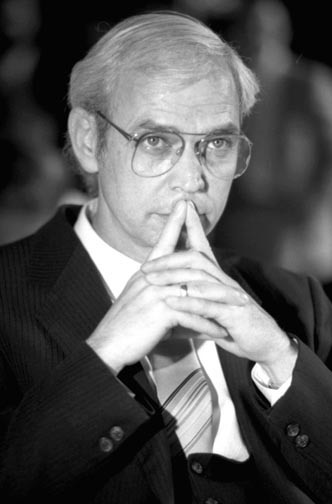
was an U.S. Army non-commissioned officer who, from 1974 until his arrest on August 23, 1988, sold top secret classified information to the People's Republic of Hungary, including top secret NATO war plans. He was convicted of espionage and high treason in a German court in 1990, and was sentenced to life imprisonment.
More:
http://en.wikipedia.org/wiki/Clyde_Le...
http://www.hanford.gov/c.cfm/oci/ci_s...
 John Walker:
John Walker:
is a former United States Navy Chief Warrant Officer and communications specialist convicted of spying for the Soviet Union from 1968 to 1985. In late 1985, Walker reached a plea agreement with federal prosecutors, which required him to testify against his co-conspirator, former Senior Chief Petty Officer Jerry Whitworth, and provide full details of his espionage activities. In exchange, prosecutors agreed to a lesser sentence for Walker's son, Michael Walker, who was also involved in the spy ring. During his time as a Soviet spy, Walker helped the Soviets decipher more than one million encrypted naval messages, organizing a spy operation that The New York Times reported in 1987 “is sometimes described as the most damaging Soviet spy ring in history.”
More:
http://en.wikipedia.org/wiki/John_Ant...
http://www.usni.org/magazines/navalhi...
 Oliver "Buck" Revell:
Oliver "Buck" Revell:
He served for five years as an Officer and Aviator in the U.S. Marine Corps, leaving active duty in 1964 as a Captain. He then served 30 years as a Special Agent and Senior Executive of the Federal Bureau of Investigation (1964-1994). From 1980 until 1991 he served in FBI Headquarters first as Assistant Director in charge of Criminal Investigations (including terrorism); then as Associate Deputy Director he was in charge of the Investigative, Intelligence, Counter-Terrorism, Training, Laboratory and International programs of the Bureau (1985-91). He served as a member of the President’s Council on Integrity and Efficiency (1980-91), the National Foreign Intelligence Board (1987-91), and the Senior Review Group, Vice President’s Task Force on Terrorism (1985-1986). Mr. Revell also served as Vice Chairman of the Interagency Group for Counter-Intelligence (1985-91), and on the Terrorist Crisis Management Committee of the National Security Council. In September 1987, Mr. Revell was placed in charge of a joint FBI/CIA/U.S. military operation (Operation Goldenrod) which led to the first apprehension overseas of an international terrorist. President Reagan commended him for his leadership of this endeavor. On May 1, 1992 the Attorney General ordered Mr. Revell to Los Angeles placing him in command of joint Federal law enforcement efforts to suppress the riots and civil disorder; he also coordinated the law enforcement activities of the assigned Military Forces. He received the Attorney General’s Special Commendation Award for this endeavor. He was Special Agent in Charge (SAC) of the Dallas Division of the FBI at the time of his retirement in September 1994. He retired with the rank of Associate Deputy Director.
(Source: http://www.jinsa.org/board-advisors/o...)
More:
http://www.internationalspeakers.com/...
http://www.revellgroup.com/Buck%27s%2...
 William Casey:
William Casey:
intelligence officer, lawyer, and CIA director (1981-87), born in New York City. During World War II, Casey was the chief of the Office of Strategic Services (OSS), overseeing secret intelligence operations for Europe (1944). After serving as Ronald Reagan's 1980 campaign manager, Casey was appointed as CIA director and became the longest-serving DCI since Allen Dulles in the 1950s. With the freedoms permitted by the 1980 Intelligence Reform Act, Casey presided over an “unleashed” CIA with an increased budget and an emphasis on clandestine operations, especially in Afghanistan, Angola, and Nicaragua.
Casey's worst embarrassment came in the Iran-Contra Affair (1986); in the hearings that resulted, witnesses claimed that Casey had been involved in the affair; Casey gave false testimony to Congress under oath, but was disabled by a stroke and brain tumor from completing his testimony.
(Source: http://www.answers.com/topic/william-...)
More:
http://en.wikipedia.org/wiki/William_...
http://www.spartacus.schoolnet.co.uk/...
http://www.nytimes.com/1987/05/07/obi...
https://www.cia.gov/library/center-fo...
 Oliver North:
Oliver North: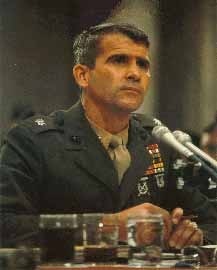
Oliver Laurence North was born in San Antonio, Texas and raised in Philmont, New York. He enrolled in the U.S. Naval Academy in 1962, but was not commissioned as a Marine Officer until 1968; he missed some time due to injuries sustained in an automobile accident.
After his commission, he served in the Vietnam War as a platoon leader; at the Marine base in Okinawa, Japan; as a battlefield tactics trainer/instructor; and at Marine Headquarters in Arlington, Virginia. After graduating from the Command and Staff course at Newport, Rhode Island, he was assigned to the National Security Council (part of President Ronald Reagan's Cabinet) in 1981.
North's most publicized assignment at NSC was to aid in negotiations for the Contras, a fighting force that was attempting to prevent a Communist regime, the Sandinistas, from taking power in Nicaragua. That led to his highly-publicized involvement in what came to be known as the Iran-Contra affair. North was the point man in a complicated trade-off that involved the sale of arms to Iran in exchange for the release of American hostages being held in Lebanon, then diverting the funds from those sales to aid the Contras in their fight to keep Nicaragua free.
President Reagan fired North from his position in 1986 for allegedly acting without approval from his superiors. North testified under immunity in 1987 that his bosses, including President Reagan himself, knew everything that was going on with the negotiations and that he never once acted without prior approval from his superiors. His refusal to take the fall for the failed plan earned him a tremendous amount of nationwide support, along with many detractors who thought he acted on his own as an out-of-control maverick. For a time, the nation was swept with "Olliemania" during the trials, and with good reason.
North retired from the Marine Corps in 1989 and is still very much in the public eye. His books include "Under Fire" and "Mission Compromised". He currently hosts "Common Sense", a right-wing radio talk show. In 1994, he was defeated by Chuck Robb in a bid for the U.S. Senate, representing Virginia.
(Source: http://www.imdb.com/name/nm0636048/bio)
More:
http://www.olivernorth.com/
http://en.wikipedia.org/wiki/Oliver_N...
 Richard Miller:
Richard Miller:On October 3rd 1984, Richard W. Miller became the first Federal Bureau of Investigation (FBI) agent in the history of the bureau to be arrested, charged and convicted of espionage. The public was in shock to hear that a member of an agency that had long prided itself on professionalism and integrity had been arrested on espionage charges. No one was more surprised, embarrassed, or outraged than the FBI agents themselves.
The father of eight children, Miller was described as an overweight, slovenly agent (careless in personal appearance/work) with marital problems. Miller also had numerous financial difficulties. Among those were the loss of $30,000 in a business investment involving gold prospecting and condominium conversions, he also owed $3,000 in property taxes. He was further involved with selling his uncle's muscle relaxants and pocketed the profits. Miller did not just need money to pay off mounting debts, but to get back on his feet. In addition to financial difficulties, Miller had a poor performance record with the FBI as a result of problems he experienced on the job. While at the FBI Field Office, Riverside, CA, he had troubles with the office keys - he left them in the office door overnight. He had problems with his FBI car - he was selling Amway products out of the trunk and using the office fuel card for personal expenditures. He was continually late on his official paperwork, which at times he did not accomplish at all. He was also known to have been stealing candy bars from the local 7-11 store. Miller was five feet 9 and half inches tall and weighed approximately 250 pounds. Because of his weight, he was counseled repeatedly and suspended on occasion for up to two weeks at a time, without pay. The FBI even threatened him with dismissal due to his weight problem. Thus, Miller was an easy target for Svetlana. Thankfully, his espionage activities were short-lived, mainly due to the fact he was clumsy and very inept.
The Miller case was very difficult to investigate. When the FBI learned that Miller was secretly meeting with Svetlana, they did not know whether information was being passed and/or given to the Soviets. When the FBI began to investigate Miller, he easily picked up the surveillance, this was due to the surveillance training he received as an FBI Agent.Because he believed he was under investigation, Miller started trying to establish his defense (or alibi) by telling his supervisor that he was meeting Svetlana in an effort to fool the KGB into thinking he was a spy.
Miller was arrested, along with two accomplices, Svetlana and Nikolai Ogorodnikov, two pro-Soviet Russian émigrés who at the time of their trial were accused of being "utility agents" for the KGB since 1980. Miller secretly met with Svetlana and gave her classified and national defense documents in exchange for sex, money and gifts. Miller, who was in financial difficulties, is believed to have been sexually involved with Svetlana and was preparing to travel to Vienna, Austria, with her at the time of the arrest.
After a ten-week trial, and in agreement with the federal prosecutors, the Ogorodnikovs each pled guilty to one count of conspiracy. Nikolai was immediately sentenced to eight years imprisonment. His wife, Svetlana, later received a sentence of 18 years.
In total, Miller went to trial three times. During the first trial, Miller pled innocent, stating he met with the Ogorodnikovs in an effort to fool the KGB into thinking he was a spy. After 11 weeks of testimony, the judge declared a mistrial. In the second trial, on June 19th, 1986, Miller was found guilty of espionage and bribery. The jury rejected Miller's defense that he was trying to infiltrate the KGB as a double agent. He was subsequently sentenced on July 14th, 1986, to two consecutive life terms plus 50 years on other charges. The verdict was overturned in 1989 on the grounds that the judge erred in admitting polygraph evidence. As a result, Miller was released on bail in October 1989, to await a new trial. During this time, Miller was ordered not to leave the Los Angeles area without special permission, and he also underwent therapy by order of the Probation Department. Miller received a third trial and on October 9th, 1990 was convicted (for a second time), on all counts of espionage. On February 4th, 1991, after almost seven years, Miller was sentenced to 20 years in Federal prison and a federal appeals court upheld this conviction on January 28th, 1993. However, a federal judge reduced Miller's sentence to 13 years and he was released from prison on May 6th, 1994.
If the timeframe of events in the FBI's affidavit is correct, it is ironic that convicted FBI spy Robert Hanssen was just beginning his betrayal as Miller's activities came to a close. Despite the fact Hanssen knew of the consequences of Miller's deeds, and the outcome of his second trial (two life sentences plus 50 years), he still chose to spy for the KGB. Hanssen also experienced first-hand the anger and outrage of his fellow FBI agents towards one of their own. You can read all about Hanssen in a previous Spy of the Month.
(Source: http://www.hanford.gov/c.cfm/oci/ci_s...)
More:
http://en.wikipedia.org/wiki/Richard_...
 Robert Jay Mathews:
Robert Jay Mathews: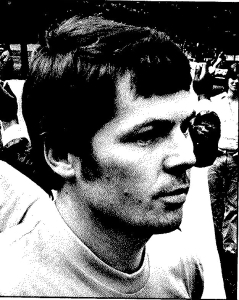
Leader of the white separatist organization "The Order" (Bruder Schweigen, the Silent Brotherhood).
More:
http://en.wikipedia.org/wiki/Robert_J...
http://www.historylink.org/index.cfm?...
 Iran-Contra
Iran-ContraRonald Reagan's efforts to eradicate Communism spanned the globe, but the insurgent Contras' cause in Nicaragua was particularly dear to him. Battling the Cuban-backed Sandinistas, the Contras were, according to Reagan, "the moral equivalent of our Founding Fathers." Under the so-called Reagan Doctrine, the CIA trained and assisted this and other anti-Communist insurgencies worldwide.
Assisting involved supplying financial support, a difficult task politically after the Democratic sweep of congressional elections in November 1982. First Democrats passed the Boland Amendment, which restricted CIA and Department of Defense operations in Nicaragua specifically; in 1984, a strengthened Boland Amendment made support almost impossible. A determined, unyielding Reagan told National Security Adviser Robert McFarlane, "I want you to do whatever you have to do to help these people keep body and soul together."
What followed would alter the public's perception of the president dramatically. How "Iran" and "Contra" came to be said in the same breath was the result of complicated covert activities, all carried out, the players said, in the name of democracy.
In 1985, while Iran and Iraq were at war, Iran made a secret request to buy weapons from the United States. McFarlane sought Reagan's approval, in spite of the embargo against selling arms to Iran. McFarlane explained that the sale of arms would not only improve U.S. relations with Iran, but might in turn lead to improved relations with Lebanon, increasing U.S. influence in the troubled Middle East. Reagan was driven by a different obsession. He had become frustrated at his inability to secure the release of the seven American hostages being held by Iranian terrorists in Lebanon. As president, Reagan felt that "he had the duty to bring those Americans home," and he convinced himself that he was not negotiating with terrorists. While shipping arms to Iran violated the embargo, dealing with terrorists violated Reagan's campaign promise never to do so. Reagan had always been admired for his honesty.
Reagan during the Iran-Contra Affair
The arms-for-hostages proposal divided the administration. Longtime policy adversaries Secretary of Defense Caspar Weinberger and Secretary of State George Shultz opposed the deal, but Reagan, McFarlane and CIA director William Casey supported it. With the backing of the president, the plan progressed. By the time the sales were discovered, more than 1,500 missiles had been shipped to Iran. Three hostages had been released, only to be replaced with three more, in what Secretary of State George Shultz called "a hostage bazaar."
When the Lebanese newspaper "Al-Shiraa" printed an exposé on the clandestine activities in November 1986, Reagan went on television and vehemently denied that any such operation had occurred. He retracted the statement a week later, insisting that the sale of weapons had not been an arms-for-hostages deal. Despite the fact that Reagan defended the actions by virtue of their good intentions, his honesty was doubted. Polls showed that only 14 percent of Americans believed the president when he said he had not traded arms for hostages.
While probing the question of the arms-for-hostages deal, Attorney General Edwin Meese discovered that only $12 million of the $30 million the Iranians reportedly paid had reached government coffers. Then-unknown Lieutenant Colonel Oliver North of the National Security Council explained the discrepancy: he had been diverting funds from the arms sales to the Contras, with the full knowledge of National Security Adviser Admiral John Poindexter and with the unspoken blessing, he assumed, of President Reagan.
Poindexter resigned, and North was fired, but Iran-Contra was far from over. The press hounded the president: Did he know about these illegal activities, and if not, how could something of this magnitude occur without his knowledge? In an investigation by the Reagan-appointed Tower Commission, it was determined that, as president, Reagan's disengagement from the management of his White House had created conditions which made possible the diversion of funds to the Contras. But there was no evidence linking Reagan to the diversion.
Speculation about the involvement of Reagan, Vice President George Bush and the administration at large ran rampant. Independent Counsel Lawrence Walsh investigated the affair for the next eight years. Fourteen people were charged with either operational or "cover-up" crimes. In the end, North's conviction was overturned on a technicality, and President Bush issued six pardons, including one to McFarlane, who had already been convicted, and one to Weinberger before he stood trial.
Although laws had been broken, and Reagan's image suffered as a result of Iran-Contra, his popularity rebounded. In 1989 he left office with the highest approval rating of any president since Franklin Roosevelt.
(Source: http://www.pbs.org/wgbh/americanexper...)
More:
http://en.wikipedia.org/wiki/Iran%E2%...
http://www.brown.edu/Research/Underst...
http://www.gwu.edu/~nsarchiv/NSAEBB/N...
http://nsarchive.wordpress.com/2011/1...
 William Sessions:
William Sessions:
William Steele Sessions was born May 27, 1930 in Fort Smith, Arkansas. He graduated from Northeast High School in Kansas City, Missouri in 1948, and in 1951 he enlisted in the United States Air Force, receiving his wings and commission in October 1952. Thereafter, he served on active duty until October 1955. In 1956 he was awarded a Bachelor of Arts degree from Baylor University, Waco, Texas, and in 1958 he received his LL.B. degree from the Baylor University School of Law.
Judge Sessions was a private practitioner of law in Waco, Texas from 1958 until 1969, when he left his firm, Haley, Fulbright, Winniford, Sessions, and Bice, to join the Department of Justice in Washington, D.C., as chief of the Government Operations Section, Criminal Division. In 1971, he was appointed United States Attorney for the Western District of Texas. In 1974, Judge Sessions was appointed United States District Judge for the Western District of Texas and in 1980 became Chief Judge of that court. He has served on the Board of the Federal Judicial Center in Washington, DC, and on committees of both the State Bar of Texas and the Judicial Conference of the United States.
On November 1, 1987, Judge Sessions resigned his position as United States District Judge to become Director of the FBI and was sworn in on November 2, 1987.
Judge Sessions is a member of the American Bar Association and has served as an officer or on the Board of Directors of the Federal Bar Association of San Antonio, the American Judicature Society, the San Antonio Bar Association, the Waco-McLennan County Bar Association, and the District Judges’ Association of the Fifth Circuit. Judge Sessions was appointed by the President as a Commissioner of the Martin Luther King, Jr., Federal Holiday Commission, and, in November 1991 was elected for a 3-year term as a delegate for the Americas to the Executive Committee of ICPO-Interpol.
Judge Sessions has received many awards and honors, including: honorary degrees from the John C. Marshall Law School; St. Mary’s University; Dickinson School of Law; and Flagler College. He also received the Baylor University Distinguished Alumni Award; the Baylor Law School’s “Lawyer of the Year” for 1988; “Father of the Year” for public service by the National Father’s Day Committee; the Golden Plate Award from the American Academy of Achievement; the 1989 Law Enforcement Leadership Award from the Association of Federal Investigators and the DAR Medal of Honor; the Distinguished Eagle Scout Award in 1990; the Good Scout Award; the “Person of the Year” Award from the American Society for Industrial Security; the 1990 Magna Charta Award from the Baronial Order of the Magna Charta; and the Ellis Island Congressional Medal of Honor in 1992.
(Source: http://www.fbi.gov/about-us/history/d...)
More:
http://en.wikipedia.org/wiki/William_...
http://www.hklaw.com/William-Sessions/
 Robert Mueller:
Robert Mueller: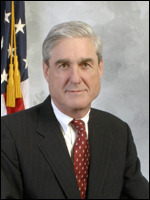
Robert Mueller was nominated by President George W. Bush and became the sixth Director of the FBI on September 4, 2001.
Born in New York City, Mr. Mueller grew up outside of Philadelphia. He graduated from Princeton University in 1966 and later earned a master’s degree in International Relations at New York University.
After college, he joined the United States Marine Corps, where he served as an officer for three years, leading a rifle platoon of the Third Marine Division in Vietnam. He is the recipient of the Bronze Star, two Navy Commendation Medals, the Purple Heart, and the Vietnamese Cross of Gallantry.
Following his military service, Mr. Mueller earned a law degree from the University of Virginia Law School in 1973 and served on the Law Review.
After completing his education, Mr. Mueller worked as a litigator in San Francisco until 1976. He then served for 12 years in United States Attorney’s Offices, first in the Northern District of California in San Francisco, where he rose to be chief of its criminal division. In 1982, he moved to Boston as an Assistant United States Attorney, where he investigated and prosecuted major financial fraud, terrorist, and public corruption cases, as well as narcotics conspiracies and international money launderers.
After serving as a partner at the Boston law firm of Hill and Barlow, Mr. Mueller returned to public service. In 1989 he served in the United States Department of Justice as an assistant to Attorney General Richard L. Thornburgh. The following year he took charge of its Criminal Division. In 1991, he was elected Fellow of the American College of Trial Lawyers.
In 1993, Mr. Mueller became a partner at Boston’s Hale and Dorr, specializing in complex white collar crime litigation. He again returned to public service in 1995 as senior litigator in the Homicide Section of the District of Columbia United States Attorney’s Office. In 1998, Mr. Mueller was named United States Attorney in San Francisco and held that position until 2001.
Mr. Mueller and his wife, Ann, have two daughters.
(Source: http://www.fbi.gov/about-us/history/d...)
More:
http://en.wikipedia.org/wiki/Robert_M...
 Omar Abdel-Rahman:
Omar Abdel-Rahman:
Involved with the Mujahadeen fight against the Soviet occupation of Afghanistan, his primary goal has always been the destruction of the governments of both Egypt and the United States. In the 1980s he was tortured and tried by Egyptian authorities on charges of issuing a fatwa against Anwar Sadat -- who later died at the hands of Egyptian Islamic Jihad, of which Abdel-Rahman was the spiritual leader. Inexplicably, Abdel-Rahman was brought into the United States by the CIA with a tourist visa. There, he maintained a terror cell that culminated in the first attack on the World Trade Center in 1993. He was convicted of conspiracy over those events, defended by William Kunstler.
(Source: http://www.nndb.com/people/923/000099...)
More:
http://en.wikipedia.org/wiki/Omar_Abd...
http://www.cbsnews.com/8301-202_162-5...
 Abdel Baset Ali al-Megrahi:
Abdel Baset Ali al-Megrahi:
was head of security for Libyan Arab Airlines, director of the Centre for Strategic Studies in Tripoli, Libya, and an alleged Libyan intelligence officer. On 31 January 2001, Megrahi was convicted, by a panel of three Scottish judges sitting in a special court at Camp Zeist in the Netherlands, of 270 counts of murder for the bombing of Pan Am Flight 103 over Lockerbie, Scotland, on 21 December 1988 and was sentenced to life imprisonment.
More:
http://en.wikipedia.org/wiki/Abdelbas...
http://www.guardian.co.uk/world/2012/...
http://www.bbc.co.uk/news/world-afric...
 El Sayyid Nosair:
El Sayyid Nosair: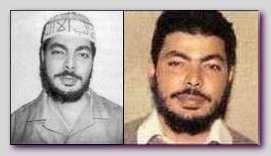
is an Egyptian-born American citizen, convicted of involvement in the 1993 World Trade Center bombing. He was also tried for, but not convicted of, the assassination of Rabbi Meir Kahane a Jewish religious figure and right-wing Israeli politician in November 1990.
More:
http://en.wikipedia.org/wiki/El_Sayyi...
http://www.nytimes.com/2012/01/14/nyr...
 Janet Reno:
Janet Reno:
Janet Reno was born on July 21, 1938 in Miami, Florida. She received her A.B. degree from Cornell University in 1960, and her LL.B. degree from Harvard Law School in 1963.
From 1963-1967, Ms. Reno was an associate at Brigham & Brigham. In 1967, she became a partner at Lewis & Reno and remained there until 1971, when she became staff director, Judicial Committee, Florida House of Representatives. In the spring of 1973, she was consultant to the Florida State Senate Criminal Justice Committee for Revision of Florida’s Criminal Code. After working as the administrative assistant to the state attorney, 11th Judicial Circuit, Florida (Miami) from 1973-1976, Ms. Reno rejoined the private sector as a partner at Steel, Hector & Davis in Miami. She remained in that position until 1978, when the Governor of Florida appointed her to serve as the State Attorney in Miami making her the first woman to hold that top prosecutor position. She stayed in that position until 1993, when she was appointed Attorney General by President Clinton.
Ms. Reno was the President of the Florida Prosecuting Attorneys Association from 1984 to 1985. Additionally, she was a member of the Special Committee on Criminal Justice in a Free Society of the American Bar Association from 1986-1988. In 1992, she was a member of the Task Force on Minorities and the Justice System of the American Bar Association.
Ms. Reno was awarded the Herbert Harley Award, American Judicature Society in 1981. In 1983, she was awarded the Public Administrator of the Year, American Society for Public Administration, South Florida Chapter. She received the Medal of Honor Award, the Florida Bar Association in 1990.
On March 12, 1993, Ms. Reno became the first woman and 78th attorney general. She went on to become the longest serving attorney general in the 20th century.
(Source: http://www.justice.gov/ag/aghistpage....)
More:
http://en.wikipedia.org/wiki/Janet_Reno
 World Trade Center Bombing (1993):
World Trade Center Bombing (1993):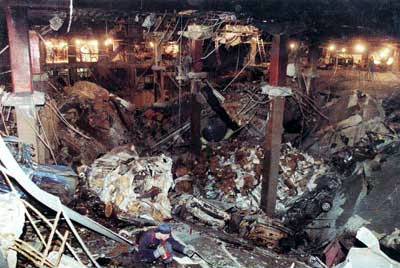
The immense blast happened at 1218 local time in the Secret Service's section of the car park underneath and between what are New York's tallest buildings.
It left a gaping hole in the wall above the Path underground station. Most of those who died are believed to have been crushed by the station ceiling.
It ripped through three floors of concrete, scattering ash and debris and set off a fire that sent choking smoke and flames up through one of the 110-story "Twin Towers".
More:
http://en.wikipedia.org/wiki/1993_Wor...
http://www.fbi.gov/news/stories/2008/...
 Waco Siege:
Waco Siege:
began on February 28, 1993, and ended violently 51 days later on April 19. The siege began when the United States Bureau of Alcohol, Tobacco and Firearms (ATF), accompanied by several members of the media, attempted to execute a search warrant at the Branch Davidian ranch at Mount Carmel, a property located in the city of Elk, Texas nine miles (fourteen kilometers) east-northeast of Waco, Texas. On February 28, shortly after the attempt to serve the warrant, an intense gun battle erupted, lasting nearly two hours. In this armed exchange, four agents and six Branch Davidians were killed. Upon the ATF's failure to execute the search warrant, a siege was initiated by the Federal Bureau of Investigation. The siege ended 50 days later when a fire destroyed the compound when a second assault was launched. Seventy-six people died in the fire, including more than 20 children, two pregnant women, and the sect leader David Koresh.
More:
http://en.wikipedia.org/wiki/Waco_siege
http://www.pbs.org/wgbh/pages/frontli...
 Louis J. Freeh:
Louis J. Freeh:
Louis J. Freeh was born in Jersey City, New Jersey. He graduated Phi Beta Kappa from Rutgers College in 1971. Director Freeh received a J.D. degree from Rutgers Law School in 1974 and an LL.M. degree in criminal law from New York University Law School in 1984. He was a First Lieutenant in the United States Army Reserve.
Director Freeh served as an FBI special agent from 1975 to 1981 in the New York City Field Office and at FBI Headquarters in Washington, D.C. In 1981, he joined the United States Attorney’s Office for the Southern District of New York as an Assistant United States Attorney. Subsequently, he held positions there as chief of the Organized Crime Unit, Deputy United States Attorney, and Associate United States Attorney.
During this time, Director Freeh was the lead prosecutor in the “Pizza Connection” case, the largest and most complex investigation ever undertaken at the time by the United States government. The case involved an extensive drug-trafficking operation in the United States by Sicilian organized crime members who used pizza parlors as fronts. Following the investigation, Director Freeh served as the federal government’s principal courtroom attorney in the 14-month trial and won the conviction of 16 of 17 co-defendants. In 1990, he was appointed a special prosecutor by the attorney general to oversee the investigation into the mail-bomb murders of Federal Judge Robert Vance of Birmingham, Alabama and civil rights leader Robert Robinson of Savannah, Georgia. This case became known as the VANPAC case. After extensive investigation, a suspect was apprehended, prosecuted, and convicted.
In July 1991, former President George Bush appointed Freeh as United States District Court Judge for the Southern District of New York. While serving in this position he was nominated to be the Director of the FBI by President Clinton on July 20, 1993. He was confirmed by the Senate on August 6, 1993 and was sworn in as Director on September 1, 1993.
In his career as a civil servant, Freeh had been recognized on several occasions for his exemplary accomplishments. In 1987 and 1991, he received the Attorney General’s Award for Distinguished Service, the second highest annual honor given by the Department of Justice. Other commendations include the John Marshall Award for Preparation of Litigation, awarded annually by the Attorney General, and the Federal Law Enforcement Officers Association Award.
(Source: http://www.fbi.gov/about-us/history/d...)
More:
http://en.wikipedia.org/wiki/Louis_Freeh
 Abdul Hakim Murad:
Abdul Hakim Murad:[image error]
was an alleged conspirator in the Bojinka plot planned mujahid attacks with Ramzi Yousef who was one of the main perpetrators and creator of the bomb for the 1993 World Trade Center bombing. He was arrested trying to retrieve plans for the plot which was the forerunner to the September 11 attacks with airliners on US targets. In 1996, he was convicted in the United States of trying to blow up a dozen airliners and sentenced to life in prison.
(Source: http://en.wikipedia.org/wiki/Abdul_Ha...)
More:
http://www.globaljihad.net/view_page....
 Oklahoma City Bombing:
Oklahoma City Bombing:
On the morning of April 19, 1995, Timothy McVeigh parked a rental truck with explosives in front of the Alfred P. Murrah Federal Building and at 9:02am, a massive explosion occurred which sheared the entire north side of the building, killing 168 people.
The Alfred P. Murrah Federal Building was a United States Government office building located in Oklahoma City, Oklahoma. The federal building was constructed in 1977 at a cost of $14.5 million, and was named for federal judge Alfred P. Murrah, an Oklahoma native. By the 1990s the building contained regional offices for the Secret Service, the Drug Enforcement Agency (D.E.A.), and the Bureau of Alcohol, Tobacco, Firearms, and Explosives (ATF), and other agencies.
Following the investigation which resulted in the execution of Timothy McVeigh and the sentence of life without parole for Terry Nichols, the surviving structure was demolished with explosives on May 23, 1995. The entire 3.3 acre site subsequently became home to the Oklahoma City National Memorial & Museum, a place to honor the victims, survivors and rescue workers, and to learn the impact of violence.
More:
http://en.wikipedia.org/wiki/Oklahoma...
http://www.oklahomacitynationalmemori...
http://www.fbi.gov/about-us/history/f...
 Timothy McVeigh:
Timothy McVeigh:
Convicted perpetrator of the 1995 Oklahoma City bombing, born in Pendleton, New York, USA. Timothy McVeighHe joined the army in 1988, took part in Operation Desert Storm, and was discharged in 1991. He became internationally known when he was charged with the bombing of the Alfred P Murrah US government building in Oklahoma City in 1995, in which 168 people died. At his trial in 1997, a Denver jury found him guilty of conspiracy and murder, and he was sentenced to death. Failing all appeals, he was executed by lethal injection in 2001. Two other conspirators, Terry Nichols (1955- ) and Michael Fortier (1969- ), were also later convicted.
(Source: http://www.biography.com/people/timot...)
More:
http://en.wikipedia.org/wiki/Timothy_...
http://www.trutv.com/library/crime/se...
 Ted Kaczynski (Unabomber):
Ted Kaczynski (Unabomber):
is an American mathematician, social critic, and Neo-Luddite who engaged in a mail bombing campaign that spanned nearly 20 years, killing three people and injuring 23 others.
More:
http://en.wikipedia.org/wiki/Ted_Kacz...
http://www.trutv.com/library/crime/te...
http://www.biography.com/people/ted-k...
 Khalid Sheikh Mohammed:
Khalid Sheikh Mohammed:
Born March 1, 1964 or April 14, 1965 in the Baluchistan region of Pakistan. Khalid Sheikh Mohammed was raised in Kuwait and joined the Muslim Brotherhood at age 16. He pursued his education in the United States, earning a degree in mechanical engineering from North Carolina Agricultural and Technical State University in 1986.
After graduation, Mohammed and his brothers went to Afghanistan to resist the Soviet invasion in the late 1980s. It is believed that soon after he began anti-American terrorist operations. His first terrorist plan was allegedly Operation Bojinka, a plot to bomb 12 commercial airlines en route between the U.S. and Asia. The plot was discovered but Mohammed had fled to Qatar. He them moved to Afghanistan and became the leader of al Qaeda's media committee.
According to the 9/11 Commission Report, Mohammed was "the principal architect of the 9/11 attacks." He was indicted on terrorism charges following the attacks and placed on the FBI's Most Wanted Terrorists list. Mohammed was captured in Rawalpindi, Pakistan on March 1, 2003 by the Pakistani ISI. Since then, he has been in U.S. custody.
In March 2007, following six months of detention at Guantanamo Bay, Cuba, Khalid Sheikh Mohammed confessed to masterminding the September 11 terrorist attacks. He also confessed to being behind the Richard Reid shoe bombing attempt, the Bali nightclub bombing, the 1993 World Trade Center bombing, and the Daniel Pearl murder, as well as various other terror plots. Skeptics believe his confessions may be the result of Guantánamo Bay's alleged use of torture during interrogations.
(Source: http://www.biography.com/people/khali...)
More:
http://en.wikipedia.org/wiki/Khalid_S...
 Richard Miniter
Richard Miniter
 George Tenet:
George Tenet:
George John Tenet was sworn in as the 18th Director
of Central Intelligence on July 11, 1997, following a
unanimous vote by both the Senate Select Committee
on Intelligence and the full Senate. In this position,
he led the United States Intelligence Community, a
team of 14 foreign intelligence organizations, and
presided over the daily activities of one of its
members, the Central Intelligence Agency.
Under two presidents, Director Tenet led efforts to
rebuild and modernize our country’s capacity to
acquire, analyze and disseminate information vital
to the security of all Americans. These investments
in people and technology have enhanced our national
ability to fight global terrorism and meet the many
other challenges and opportunities that face the
United States overseas.
Prior to his appointment, Mr. Tenet served as
Deputy Director of Central Intelligence, having been
confirmed in that post in July 1995. In December
1996, he was named Acting Director.
Mr. Tenet came to the Intelligence Community from
the National Security Council, where he was Special
Assistant to the President and Senior Director for
Intelligence Programs. In that office, he developed
and coordinated policies on virtually every aspect of
intelligence and espionage from collection priorities
to covert action.
Before joining the NSC, Mr. Tenet was a member of
President Clinton’s national security transition
team, responsible for a comprehensive assessment of
the Intelligence Community.
For more than four years, Mr. Tenet was Staff
Director of the Senate Select Committee on
Intelligence under the chairmanship of Senator
David C. Boren. There, he coordinated the committee’
s full workload of oversight and legislation. His
previous service on the committee involved the
monitoring of arms control negotiations between the
United States and the Soviet Union, with emphasis
on the role and contributions of intelligence.He
joined the SSCI staff in August 1985 from the office
of Senator H. John Heinz III, where he had been
both a legislative assistant covering national
security and energy issues and legislative director.
Mr. Tenet is a member of the Faculty of the Edmund
A. Walsh School of Foreign Service at Georgetown
University as Distinguished Professor in the
Practice of Diplomacy and Senior Research Associate
in the Institute for the Study of Diplomacy. In Fall
2007, Mr. Tenet joined Allen & Company LLC as a
managing director.
(Source: http://www.georgejtenet.com/Bio.html)
More:
http://en.wikipedia.org/wiki/George_T...
https://www.cia.gov/library/center-fo...

 George Tenet
George Tenet
 Khobar Towers Bombing:
Khobar Towers Bombing:
Khobar Towers was a housing complex built by the Saudis in 1979 near the city of Dhahran, Eastern Province, Saudi Arabia, but essentially unoccupied until the Gulf War in 1990. During and following the War, coalition forces operating in the Dhahran area occupied the Towers, including service members from the United States, Saudi Arabia, France, and the United Kingdom. Saudi military families currently live in the southern section of the complex. The living quarters are primarily high-rise apartments up to eight stories tall. The complex also includes office space and administrative facilities. The perimeter of the US , French, and British area is surrounded by a fence and a row of concrete Jersey barriers. There is a parking lot outside of the north perimeter which is adjacent to a park and a small group of houses.
In July 1992, Army Forces Central Command - Saudi Arabia (ARCENT-SA) was formally established. Then ARCENT-SA was assigned a dual role as the daily brigade command for the PATRIOT Air Defense Artillery Battalion Task Force rotating in and out of Saudi Arabia as well as the forward deployed headquarters for the Army Forces Central Command with multiple critical logistical responsibilities for contingency operations. Initially, ARCENT-SA was located in the Khobar Towers complex in Dhahran, Saudi Arabia.
Prior to the Fall of 1994, the terrorist threat in Saudi Arabia was benign, marred only by three isolated attacks against U.S. military targets in early 1991 during Operation DESERT STORM and the hijacking of a Saudi Airbus in 1994. Two incidents occurred almost simultaneously on February 3, 1991, in Jeddah. Unknown persons doused a U.S. transport bus with kerosene. Individuals fired shots at an other U.S. military bus, injuring three U.S. soldiers and a Saudi guard. On March 28, 1991, an unknown individual fired at least six shots at a U.S. Marine vehicle, slightly injuring three Marines. The internal security picture in Saudi Arabia began to change in late 1994. The volume and tone of reporting on potential terrorist threats became more ominous. The hypothesis was that much of this activity was a product of state-sponsored actions.
In November 1995, a car bomb exploded in Riyadh, Saudi Arabia, killing five Americans. In June 1996, terrorists attacked the U.S. military complex at Khobar Towers in Saudi Arabia, killing 19 Americans and wounding hundreds more. The Air Force relocated to temporary facilities at Prince Sultan Air Base, near Al Kharj southeast of Riyadh. Defense Department civilians located in Riyadh relocated to the Eskan Village military compound, south of Riyadh. The Army moved to temporary facilities at two sites in the Dhahran area. The U.S. Army in the Dhahran area, scheduled to receive Harvest Falcon assets, decided to repair and renovate modular housing left from Operations Desert Shield and Storm.
The 4404th Wing (Provisional) initiated extensive force protection measures beginning in November 1995. These initiatives focused on the threat from a bomb penetrating to the interior of Khobar Towers. The Wing did not take adequate protective measures to meet other viable terrorist threats to service members and facilities in the Dhahran area. These threats included attacks by stand-off weapons, assassination and/or kidnapping of individuals, ambush of vehicles, and stand-off bombs. The security infrastructure and systems at Khobar Towers proved inadequate to deter and defend against the June 25, 1996 terrorist bomb attack. This was despite significant efforts by the United States and Saudi Arabia to enhance security of the facility following the November 13, 1995 bombing of the Office of the Program Manager, Saudi Arabian National Guard in Riyadh.
Two Vulnerability Assessments of Khobar Towers were made by the Air Force Office of Special Investigations prior to the bombing. The first Vulnerability Assessment was completed on July 18, 1995. The second Assessment was completed on January 8, 1996 in reaction to the Office of the Program Manager, Saudi Arabian National Guard bombing in Riyadh. Corrective actions for deficiencies noted in the January 1996 assessment were essentially complete at the time of the bombing. Exceptions included the "...relocating (of) mission personnel to other facilities within the compound, thereby eliminating the concentration of aircrews..." and adding "Shatter Resistant Window Film to all windows within the compound."
The fence surrounding the Khobar Towers housing complex had not changed substantially since US forces first occupied the complex in 1990. The fence was not substantially repaired or upgraded until after the Office of the Program Manager, Saudi Arabian National Guard bombing on November 13, 1995. At that time, the perimeter fence was a chain link fence approximately seven to eight feet high, including three strands of barbed wire or one row of concertina along the top. It was surrounded with Jersey barriers. There were few lights, and no surveillance cameras, sensors, or alarms were in use. On June 25, 1996, a terrorist truck bomb exploded outside the northern perimeter of Khobar Towers, Dhahran, Saudi Arabia, a facility housing US and allied forces supporting the coalition air operation over Iraq, Operation SOUTHERN WATCH. Estimates of the size of the bomb range from the equivalent of 3,000 to more than 30,000 pounds of TNT. The Downing Task Force estimated that the bomb was between 3,000 and 8,000 pounds, most likely about 5,000 pounds. While US Air Force Security Police observers on the roof of the building overlooking the perimeter identified the attack in progress and alerted many occupants to the threat, evacuation was incomplete when the bomb exploded. Nineteen fatalities and approximately 500 US wounded resulted from the attack. The perpetrators escaped.
(Source: http://www.globalsecurity.org/militar...)
More:
http://en.wikipedia.org/wiki/Khobar_T...
 Richard Clarke:
Richard Clarke:
Richard A. Clarke is an internationally-recognized expert on security, including homeland security, national security, cyber security, and counterterrorism. He is currently an on-air consultant for ABC News and teaches at Harvard's Kennedy School of Government.
Clarke served the last three Presidents as a senior White House Advisor. Over the course of an unprecedented 11 consecutive years of White House service, he held the titles of:
- Special Assistant to the President for Global Affairs
- National Coordinator for Security and Counterterrorism
- Special Advisor to the President for Cyber Security
Prior to his White House years, Clarke served for 19 years in the Pentagon, the Intelligence Community, and State Department. During the Reagan Administration, he was Deputy Assistant Secretary of State for Intelligence. During the Bush (41) Administration, he was Assistant Secretary of State for Political-Military Affairs and coordinated diplomatic efforts to support the 1990–1991 Gulf War and the subsequent security arrangements.
(Source: http://www.richardaclarke.net/bio.php)
More:
http://en.wikipedia.org/wiki/Richard_...
http://www.biography.com/people/richa...

 Richard A. Clarke
Richard A. Clarke
 Ruby Ridge:
Ruby Ridge:
was the site of a deadly confrontation and siege in northern Idaho in 1992. It involved Randy Weaver, his family, Weaver's friend Kevin Harris, and agents of the United States Marshals Service and Federal Bureau of Investigation. It resulted in the death of Weaver's son Sammy, his wife Vicki, their family dog "Striker", and Deputy US Marshal William Francis Degan.
More:
http://en.wikipedia.org/wiki/Ruby_Ridge
http://www.trutv.com/library/crime/ga...
http://law2.umkc.edu/faculty/projects...
 Earl Pitts:
Earl Pitts: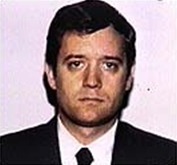
Born in 1953, Earl Edwin Pitts appeared to be a clean-cut, all-American, who joined the Federal Bureau of Investigations to protect the U.S. Little did the FBI know, but the all-American Special Agent would turn into the second spy ever to be arrested by the FBI from within their own ranks.
While assigned to the New York field office in 1987, Pitts sent a letter to the Soviet Mission at the United Nations, offering to spy for the Soviet Union, the same people he was there to guard against. Pitts met with the gentleman (not named due to his later defection to the U.S.) and was turned over to Alexander Karpov, a high-level official with the KGB (later known as the SVRR after the fall of the Soviet Union). Pitts and Karpov first met at the New York City Public Library and their association continued for the next five years. During that time period, Pitts had access to a large amount of highly sensitive and classified operations.
Although the FBI had suspicions of a possible "mole" within their ranks, they had no proof until August 1995. Their suspicions were based on a 1993 analytical product combining information from various areas (failed operations, projects taking a bad turn, several anomalies at the same location). The concern focused on the time period of 1986-90 in New York and the FBI began to look at all FBI personnel assigned to their New York office during that period. In Aug 1995, the FBI debriefed a cooperating witness (the unnamed person mentioned above) who named Pitts as an espionage agent spying for Russia. The FBI ran a check on Pitts' financial and travel records (which showed unusual activity). In an effort to gather enough evidence for a conviction, the FBI launched an undercover operation to confirm Pitts' suspected espionage activities. Aside from evidence gathering, the FBI hoped to determine what programs, projects and operations Pitts compromised during the course of his treachery. As the undercover operation progressed, Pitts made some very damaging statements regarding his activities from 1987-92. The operation showed Pitts giving the undercover agents (posing as SVRR officers) sensitive and classified documents relating to national defense, personal, medical and family information about other FBI Special Agents who might be vulnerable to recruitment. Pitts wrote a letter to an undercover agent stating he gave the Russians everything he was aware of during the 1987-92 time period.
In his effort to provide the SVRR with as much information as he could during this "re-contact period," Pitts gave them a key to Quantico and his identification badge to make false copies of for entry. He also provided the SVRR (undercover officers) with strategies to recruit additional agents and planned to smuggle an SVRR technical agent into Quantico. In an effort to recruit more spies for the SVRR, Pitts provided them with the names of agents with drinking problems, marital problems, medical problems, financial problems, etc. Pitts also came up with an escape plan, which he shared with his "friends" (undercover FBI agents) requiring the transfer of $35,000 from his Russia account (at the time the account held $100,000).
As the operation against Pitts continued, a letter was sent to him detailing some of the tasks he was to perform. Pitts' wife, Mary, found the letter and became suspicious. She started searching his office and called the FBI. Prior to finding the letter, Mary had no idea her husband of over 10 years had been committing espionage. She felt she had no choice but to report her suspicions to the authorities. This was not a marriage on the "rocks," in fact Mary described her relationship as "wonderful." Mary had previously worked in an FBI office, which is where she met Pitts.
Pitts was arrested on Dec 18, 1996 by the FBI and charged with attempted espionage, conspiracy to commit espionage and lesser counts (12 in all). It is estimated Pitts acquired $224,000 in ill-gotten gains from 1987-92. On April 30, 1997, Pitts pled guilty and was sentenced to 27 years in prison.
(Source: http://www.hanford.gov/c.cfm/oci/ci_s...)
More:
http://en.wikipedia.org/wiki/Earl_Edw...
http://www.fas.org/irp/offdocs/pitts_...
 Ali Mohamed:
Ali Mohamed:is a double agent who worked for both the CIA and Egyptian Islamic Jihad simultaneously, reporting on the workings of each for the benefit of the other.
More:
http://en.wikipedia.org/wiki/Ali_Mohamed
http://www.dhra.mil/perserec/adr/coun...
 Ayman al-Zawahiri:
Ayman al-Zawahiri:[image error]
Al Qaeda leader. Born Ayman Muhammad Rabaie al-Zawahiri on June 19, 1951 in Maadi, Egypt. Born into an upper-class family of doctors and scholars, al Zawahiri was a studious boy who joined his first Islamist group at age 14. He graduated from Cairo University in 1974 and received his master??s in surgery in 1978.
By 1979, al Zawahiri had joined the radical Islamic Jihad and had gone to Afghanistan to resist the Soviet Union's occupation. It was there that he met Osama bin Laden, the head of al Qaeda. By 1996, al Zawahiri was considered a terrorist threat to the United States and was detained for six months in Russia after trying to recruit jihadists in Chechnya. The following year, he was charged with the death of 62 tourists in Egypt and sentenced to death in absentia.
In 1998, al Zawahiri formally merged Egyptian Islamic Jihad into al Qaeda, issuing a joint statement with bin Laden. Following the September 11, 2001 terrorist attacks in the United States, al Zawahiri appeared on the FBI??s Most Wanted Terrorists list. His whereabouts remain unknown, although he is believed to be in tribal Pakistan where he regularly releases videos and statements.
In 2001, al Zawahiri published a book outlining al Qaeda ideology titled Knights Under the Prophet's Banner.
(Source: http://www.biography.com/people/ayman...)
More:
http://www.fbi.gov/wanted/wanted_terr...
http://en.wikipedia.org/wiki/Ayman_al...
 1998 Bombing of Nairobi Embassy:
1998 Bombing of Nairobi Embassy: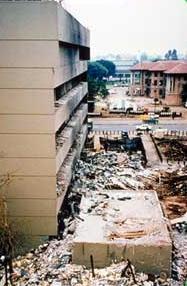
On August 7, 1998, two car bombs exploded at the American Embassies in Nairobi, Kenya, and Dar es Salaam, Tanzania, killing 224 people and wounding more than 5,000 others. Twelve Americans were killed in the Nairobi blast.
More:
http://en.wikipedia.org
/wiki/1998_United_States_embassy_bombings
http://www.adl.org/terror/focus/15_fo...
http://www.washingtonpost.com/wp-srv/...
http://www.state.gov/www/regions/afri...
 Mohamed Odeh:
Mohamed Odeh:
is one of the four former al-Qaeda members sentenced to life imprisonment in 2001 for their parts in the 1998 United States embassy bombings. He is in a supermax prison known as ADX Florence.
More:
http://en.wikipedia.org/wiki/Mohammed...
http://www.globalsecurity.org/securit...
 Mohamed al-Owhali:
Mohamed al-Owhali:
Mohamed Rashed Daoud al Owhali was born in Saudi Arabia in 1977. In 1996 Mohamed al Owhali was one of the first to attend Al-Qaeda’s Khalden training camp in Afghanistan.
Mohamed al Owhali arrived to Kenya from Pakistan on 08/02/1998, few days before the 08/07/1998 attack on USA embassies in Kenya and Tanzania. Equipped with a pistol and four stunt grenades, Mohamed al Owhali’s role in the attack was to overcome the embassy guard, to divert the attention and to pave the way for the car bomb, driven by Azzam, into the US embassy yard in Nairobi. He escaped the attack lightly wounded.
Mohamed al Owhali was caught by the Kenyan police on 08/25/1998 due to his attempt to communicate with a certain Al Qaeda associate - Ahmed al-Hada in Yemen asking Ahmed al-Hada for help to get out of Kenya. Eventually Mohamed al Owhali receives $1,000 from Ahmed al-Hada.
In his interrogation Mohamed al Owhali admitted his role in the 08/07/1998 attack, revealed the chain of command from the top operatives of Al-Qaeda to the perpetrators of the attack and the communication system of Al-Qaeda, including the use of satellite phone. He also revealed a general plan of Al Qaeda to carry out attacks against USA targets in Yemen. Mohamed al Owhali was handed over to the USA embassy in Kenya just few days after his arrest.
Mohamed al Owhali was indicted in New York, USA on 11/04/1998 and put on trial in New York, in 01/2001, alongside Wadih el Hage, Khalfan Khamis Mohamed and Mohammed Saddiq Odeh.
Mohamed al Owhali was sentenced 0n 05/29/2001 to life in prison without parole and is today (02/2007) in Supermax prison in Florence, Colorado.
(Source: http://www.globaljihad.net/view_page....)
More:
http://www.globalsecurity.org/securit...
http://en.wikipedia.org/wiki/Mohamed_...
 Ahmed Ressam:
Ahmed Ressam: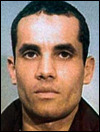
Ahmed Ressam was born on May 19, 1967, the eldest of seven children. He grew up in a small, poor town west of Algiers. His brother Kamel Ressam told Newsweek (May 8, 2000) that Ahmed was the first in the family to get a "modern" education. By his teenage years, according to Kamel, he had become somewhat of a "dandy," wearing American clothes like Levi's and Stan Smith sneakers. In 1984, Ressam developed an ulcer and was sent to Paris for treatment. In France, he read books -- banned in Algeria -- about how military dictators ruined Algeria's hopes of democracy after it gained independence from France. On his return, his brother says, Ressam was very bitter about his country. He believed that the government was corrupt and began to take up the cause of militant Islamic rebels, to his father's dismay.
(Source: http://www.pbs.org/wgbh/pages/frontli...)
More:
http://en.wikipedia.org/wiki/Ahmed_Re...
http://www.fbi.gov/about-us/history/f...
 Khalid al-Mihdhar:
Khalid al-Mihdhar:
Khalid al Mihdhar, also known as Sannan al-Makki, was born in Mecca, Saudi Arabia on 05/16/1975. He is the brother in law of Ahmed al-Darbi. In 1995 Khalid al Mihdhar went with Nawaf al-Hazmi, another 77 team member, to Bosnia to fight there for Islam. Since then they were together and did the same route to The 9/11 except in one case.
Immediately after Khalid al Mihdhar attended the Kuala Lumpur Convention, in 01/2000, he travelled to San Diego, USA, where he came under the sponsorship and had a close relationship with Anwar al-Awlaki, who served as his spiritual adviser.
In June of 2000 Khalid al Mihdhar returned to Yemen against the wishes of Al Qaeda, who wanted him to remain in the United States and help Nawaf al-Hazmi adapt.
Khalid Shaik Mohammed was angered by this and decided to remove Khalid al Mihdhar from The 9/11 plot, but he was overruled by Osama Bin Laden . After the attack on USS Cole in Aden harbor, Yemen, on 10/12/2000, Yemeni authorities suspected that Khalid al Mihdhar had been one of the key planners of the attack, and had been in the country shortly before the time of the attack. Anyhow Khalid al Mihdhar returned to USA by the end of 2000 without arousing any special attention.
On The 9/11 Khalid al Mihdhar, using papers provided by Mohamed el-Atriss, was in the team that hijacked flight 77.
(Source: http://globaljihad.net/view_page.asp?...)
More:
http://en.wikipedia.org/wiki/Khalid_a...
http://www.globalsecurity.org/securit...
 Nawaf al-Hazmi:
Nawaf al-Hazmi: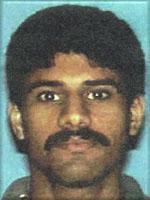
Nawaf Al Hazmi was born in Mecca, Saudi Arabia, 08/09/1976. In 1993 he flew to Afghanistan and spent time with other radical Muslims. At 1995 Nawaf Al Hazmi went with Khalid al-Mihdhar, another 77 team member, to Bosnia to fight there for Islam.
At 1996, after the war, Nawaf Al Hazmi returned to Afghanistan with his younger brother Salem Al Hazmi born 02/02/1981, and his friend Khalid al-Mihdhar and, according to some sources, the three friends fought also in Chechnya sometime in 1998.
(Source: http://globaljihad.net/view_page.asp?...)
More:
http://en.wikipedia.org/wiki/Nawaf_al...
http://www.globalsecurity.org/securit...
 Bervez Musharraf:
Bervez Musharraf:
General Pervez Musharraf, the second of three brothers, was born in Delhi on August 11, 1943. His parents chose to settle in Karachi after the creation of Pakistan. He comes from a middle class family, his father having worked for the foreign ministry. He spent his early years in Turkey, from 1949 to 1956, owing to his father, the late Syed Musharrafu-ud-din’s deputation in Ankara. Fluently he can converse in Turkish language and claims that Kamal Ataturk is his hero.
On return to Pakistan, General Pervez Musharraf received his education from Saint Patrick’s High School, Karachi, and then from F. C. College, Lahore. In 1961, he joined the Pakistan Military Academy and was commissioned in Artillery Regiment in 1964. He fought in the Indo-Pakistan War of 1965 as a young officer, and was awarded Imtiazi Sanad for gallantry. He also achieved the Nishan-i-Imtiaz (Military) and the Tamgha-i-Basalat. He has been also on the faculty of the Command and Staff College, Quetta and the war wing of (the) National Defence College. He volunteered to be a commando, and remained in the Special Services Group for seven years. He also participated in the Indo-Pak War of 1971 as a Company Commander in the Commando Battalion.
A graduate of Command and Staff College, Quetta, General Musharraf also distinguished himself at the Royal College of Defense Studies, United Kingdom. During his military career, General Musharraf acquired varied experience in different command and instructional appointments. He also served as Director General Military Operations at the General Headquarters from 1993 to 1995.
General Musharraf rose to the rank of General and was appointed as the Chief of Army Staff on October 7, 1998 when Pakistan’s army chief, General Jehangir Karamat, resigned two days after calling for the army to be given a key role in the country’s decision-making process. General Musharraf was given additional charge of Chairman Joint Chiefs Staff Committee on April 9, 1999. On October 12, 1999, when through a bloodless coup the military took over the government in Pakistan, he became the head of the state designated as Chief Executive. He assumed the office of President of Pakistan on June 20, 2001. In order to legitimize and legalize his rule, General Pervez Musharraf held a referendum on April 30, 2002 thereby elected as President of Pakistan for duration of five years. In accordance with the deal with MMA (Muttahida Majlis-e-Amal), he agrees to leave the army on 31st December, 2004 but will continue to serve five-year term as President as he got vote of confidence on January 1, 2004, from the parliament and the four provincial assemblies under the provision of the 17th Amendment duly passed by the National Assembly and the Senate.
(Source: http://storyofpakistan.com/general-pe...)
More:
http://en.wikipedia.org/wiki/Pervez_M...
http://news.bbc.co.uk/2/hi/south_asia...
http://www.biography.com/people/perve...
 USS Cole Bombing:
USS Cole Bombing:
Seventeen people died and 39 were injured in an attack on the American guided missile destroyer, USS Cole, in Aden harbour, Yemen, on October 12, 2000.
While the ship was refuelling offshore, a small craft with two men on board - presumed to be suicide bombers - approached the ship and exploded. The small boat is believed to have been packed with 400-700 pounds of explosives, and the blast blew a 40-foot hole in the side of the USS Cole.
In the months since the bombing, there was been growing evidence that the attack had been orchestrated by Usama bin Laden's al-Qa'ida network.
(Source: http://www.al-bab.com/yemen/cole1.htm)
More:
http://en.wikipedia.org/wiki/USS_Cole...
 Zacarias Moussaoui:
Zacarias Moussaoui: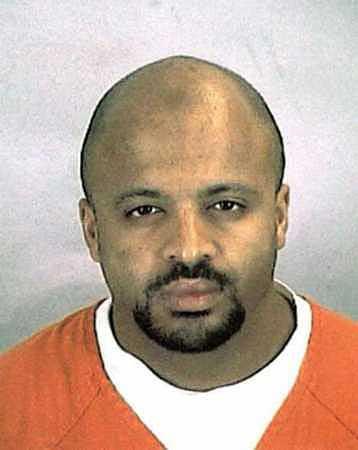
Born May 30, 1968 in Morlaix, France. Raised by a single mother, Moussaoui received his master's degree in international business from London??s South Bank University in 1995. By 1996, he was meeting with Islamic extremists in London and training in al Qaeda camps in Afghanistan.
In 2001, Moussaoui attended flight school in Norman, Oklahoma, but failed to receive his pilot license. In August, he received training at Pan-Am International Flight Academy in Eagan, Minnesota, but after his instructor became suspicious, the FBI arrested him for an immigration violation. Local FBI agents requested permission from FBI headquarters in Washington D.C. to search Moussaoui??s laptop and rooms, but their request was denied.
Following the September 11, 2001 terrorist attacks, it was believed that Moussaoui was a replacement for the 20th hijacker. Prosecutors, however, were unable to directly link him to the 19 participants. During his trial, Moussaoui admitted to being a member of al Qaeda but said he was planning a different plot to free Sheikh Omar Abdel-Rahman in Afghanistan. He then switched his testimony, saying he was guilty of all charges. In 2006, a jury sentenced Moussaoui to life imprisonment without parole.
Zacarias Moussaoui is serving his sentence at the supermax United States Penitentiary Administrative Maximum Facility in Florence, Colorado.
(Source: http://www.biography.com/people/zacar...)
More:
http://en.wikipedia.org/wiki/Zacarias...
http://news.bbc.co.uk/2/hi/americas/4...
 Patriot Act:
Patriot Act:The act, as a response to the terrorist attacks of September 11th, dramatically reduced restrictions in law enforcement agencies' gathering of intelligence within the United States; expanded the Secretary of the Treasury’s authority to regulate financial transactions, particularly those involving foreign individuals and entities; and broadened the discretion of law enforcement and immigration authorities in detaining and deporting immigrants suspected of terrorism-related acts. The act also expanded the definition of terrorism to include domestic terrorism, thus enlarging the number of activities to which the USA PATRIOT Act’s expanded law enforcement powers can be applied.
More:
http://en.wikipedia.org/wiki/Patriot_Act
http://www.justice.gov/archive/ll/hig...
Books mentioned in this topic
War by Other Means: An Insider's Account of the War on Terror (other topics)Against All Enemies : Inside America's War on Terror (other topics)
At the Center of the Storm: My Years at the CIA (other topics)
Mastermind: The Many Faces of the 9/11 Architect, Khalid Shaikh Mohammed (other topics)
In the Fullness of Life: A Biography of Dorothy Kazel, O.S.U. (other topics)
More...
Authors mentioned in this topic
John Yoo (other topics)Richard A. Clarke (other topics)
George Tenet (other topics)
Richard Miniter (other topics)
Cynthia Glavac (other topics)
More...






Augusto Pinochet attended a military college, and served with distinction in Chile's Army. He was rapidly promoted, and continued his studies at the Chilean war academy, Academia de Guerra, where he also taught. In the early 1950s, Pinochet was involved in Chile's arrests and imprisonment of communists, suspected communists, and union leaders. For about two years, Pinochet commanded a concentration camp for commies. Times change, and in 1970, a Socialist, Salvador Allende, was elected President of Chile. The U.S. Central Intelligence Agency secretly spent millions of dollars funding Chilean opposition groups, to "create pressures, exploit weaknesses [and] magnify obstacles" for Allende. Within a few years the Chilean economy was in chaos, and the CIA spent at least $11 million more to plan and fund a coup that would put Pinochet in power. Almost comically unaware, Allende gave Pinochet complete command of the Army. On 11 September 1973, the coup toppled Chile's government, and Allende was either killed or committed suicide.
Pinochet promptly appointed himself President, suspended the Constitution, closed Parliament, banned opposition political activists, illegalized trade unions, and initiated media censorship. Soccer stadiums and military bases were converted into prisons, while new prisons were rapidly constructed. "Liberal" judges were fired, and suspected leftists were rounded up, imprisoned, tortured, and killed. At least thousands of people (some say many more) who spoke out against Pinochet were arrested, and never heard from again. They were called "the disappeared".
During this time, the head of Chile's secret police was on the CIA payroll. The U.S. was one of the first nations to recognize Pinochet's presidency as "legitimate", and restored foreign aid that had been stopped while Allende was President. In short, Pinochet was America's man in Chile. Pinochet gave his country a new Constitution in 1980 which, among other things, gave him the absolute power to arrest, imprison, or exile any citizen for any reason with no recourse, solely on his say-so. The new Constitution, however, also established that he would face a plebiscite (yes/no vote) in 1988. As that date approached, opposition forces united and risked their lives by campaigning for a no vote, and "no" won.
Pinochet stepped down as President in 1990, but under the terms of the Constitution he'd written, he remained commander of the Army until 1998. Not surprisingly, there were no prosecutions against high-ranking officials of the Pinochet Presidency during this time. When he resigned as commander of the Army, he became a Chilean Senator-for-life -- another stipulation of Pinochet's Constitution.
He was arrested in England in 1998, under a Spanish warrant for crimes against humanity. Due to his frail health, however, Pinochet was allowed to return to Chile, where his health seemed to improve quickly. In 2003, the United States came the closest it's ever come to apologizing for all this: A reporter asked Secretary of State Colin Powell about Allende and Chile, and he answered, "it is not a part of American history that we're proud of".
(Source: http://www.nndb.com/people/393/000022...)
More:
http://en.wikipedia.org/wiki/Augusto_...
http://www.gwu.edu/~nsarchiv/news/200...
http://latinamericanhistory.about.com...
http://www.washingtonpost.com/wp-dyn/...